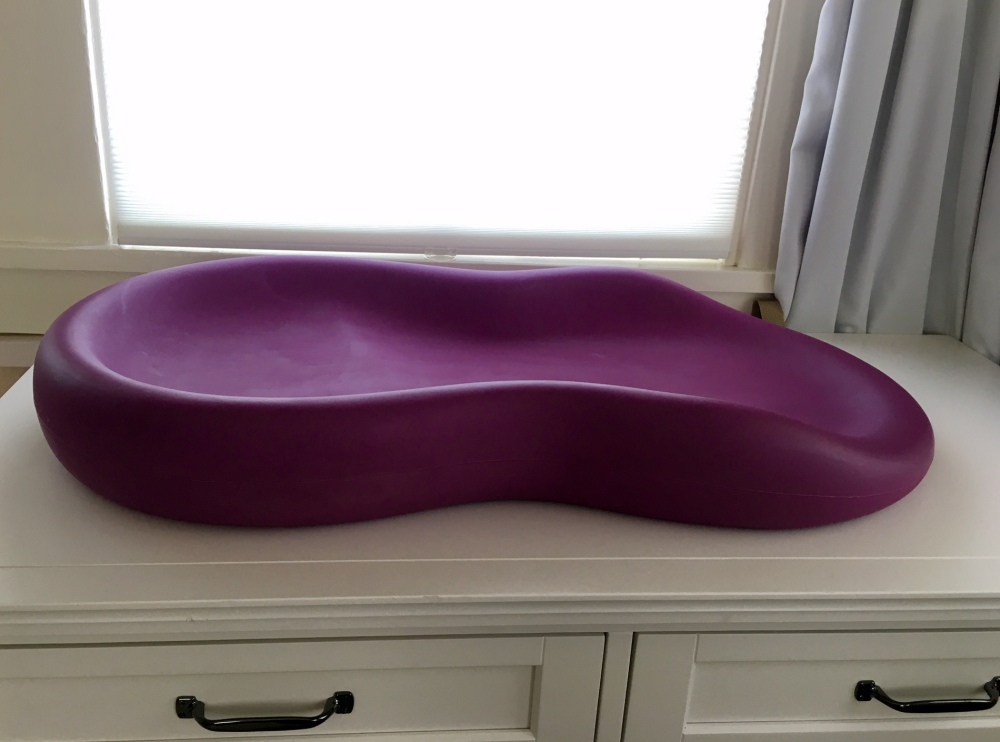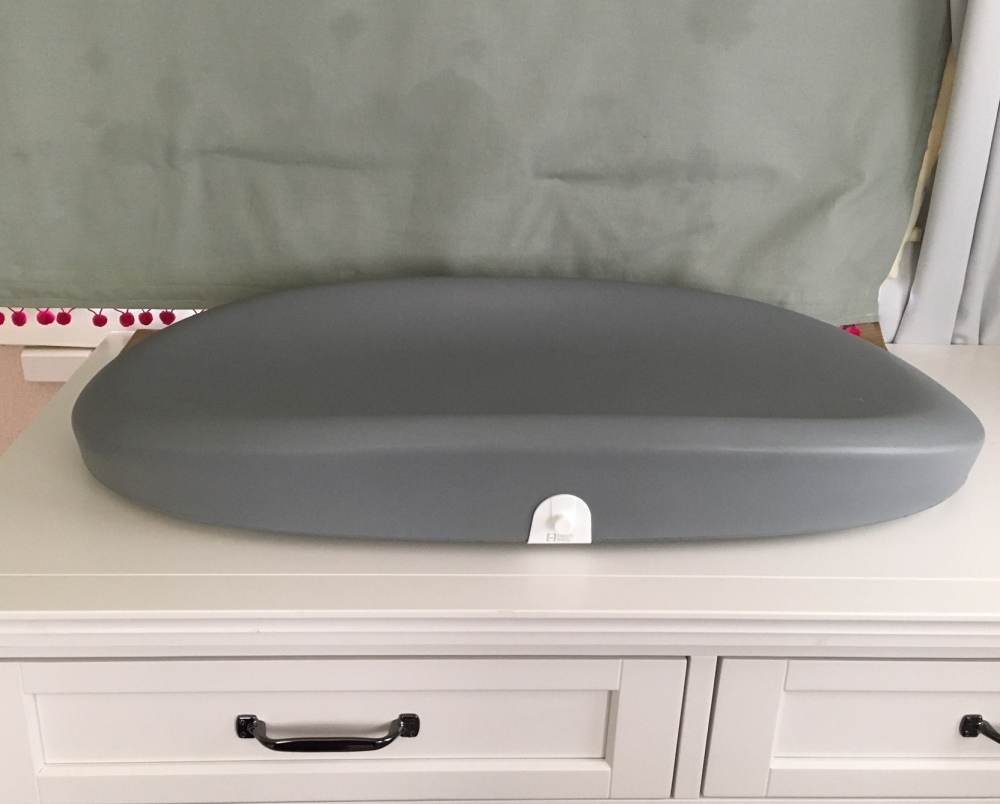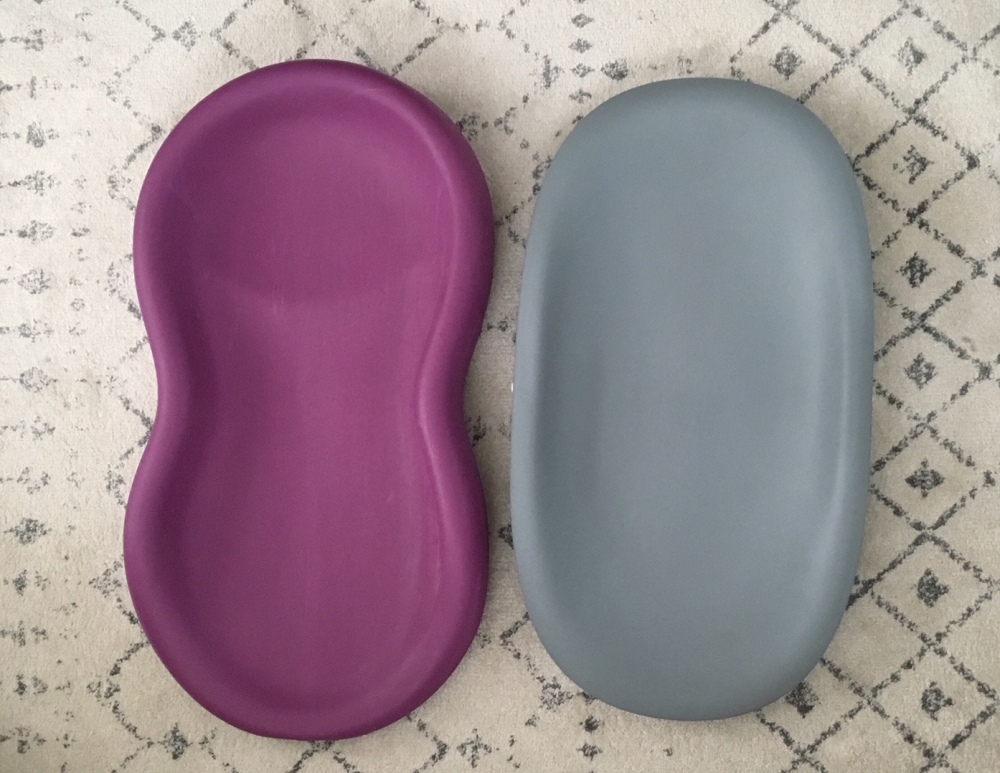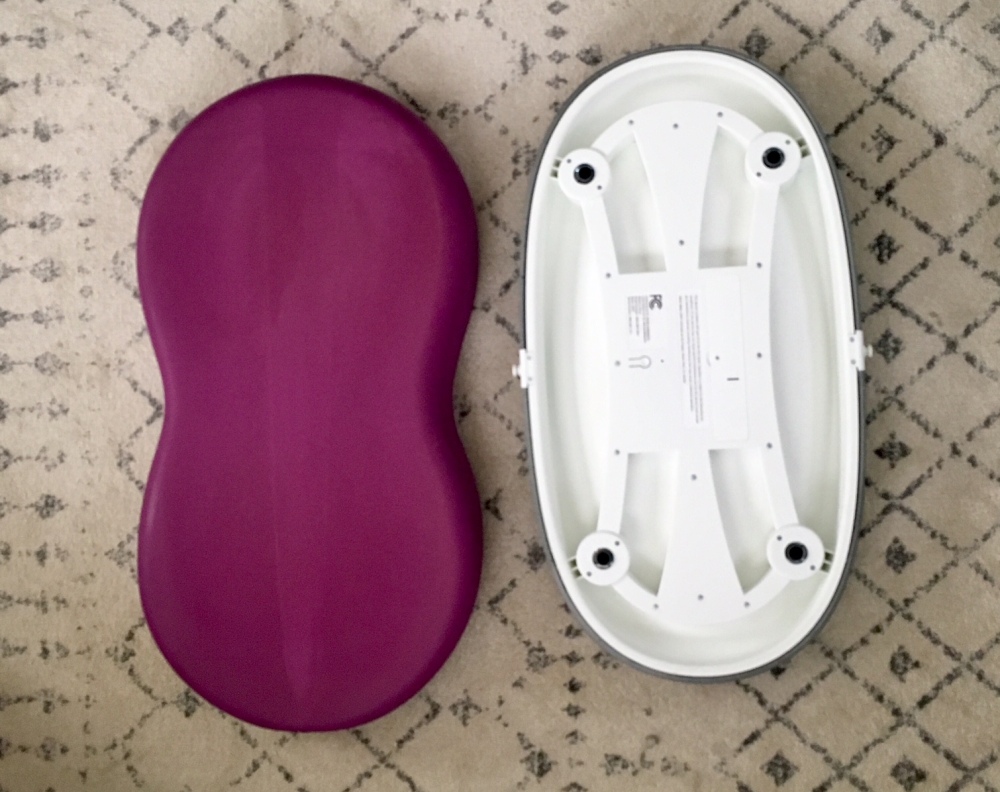This page contains affiliate links. Please see the Disclosures page for more information. Note that I purchased all these products with my own money, and was not paid to do this review. (I’m seriously just a psycho about baby products)
When my first child was 2 months old, I broke down and bought the Keekaroo Peanut Changer because I was tired of having to wash and replace her changing pad cover every time she had a blowout. It was one of the BEST purchases I made, and I’ve used it everyday since. The Keekaroo is a fantastic product. It has a nice, soft surface, is a good weight, and I love the contoured, ergonomic design. My first child is almost 2, and still fits on this changer well enough for diaper changes (she is about 33″ tall, so her legs dangle off a little, but there is plenty of space for her bottom!).

With baby #2 on the way, I needed to get a second changer, and decided to test out two different alternatives that came on the market since my first was born: the Bumbo Changing Pad and the Hatch Baby Grow Smart Changing Pad.
Bumbo Changing Pad
I tried the Bumbo Changing Pad primarily because the price point was so attractive. At $69.99, it’s just over half the price of the Keekaroo ($129.99 at time of writing). I have a Bumbo seat that’s served us well, so I figured the changing pad was worth a try.
As soon as I unboxed it, I could tell that I didn’t like it. Unlike the Keekaroo, the Bumbo was not a solid block of material; the bottom is hollowed out, and at just over 3 lbs, it didn’t have the same heft as the Keekaroo, which is 7 lbs.
I also did not like the way that the safety straps attached to the Bumbo. Because the Bumbo is so lightweight, it didn’t feel like strapping a child into it would be that secure. The Keekaroo safety strap is intended to be affixed to the changing table, itself, which I feel is a more secure way to keep your child from rolling off.
Finally, I didn’t like the surface of the Bumbo. It was basically the same as the Bumbo seat — fairly hard and a little slippery. I did not feel the drawbacks made up for the cost savings, so I returned it. It could be a decent option, IF you were to get a separate safety strap, and affixed the strap to the changing table directly, and buckle your child in over the Bumbo. I would not feel confident using it as is, with the strap attached only on the Bumbo.
Hatch Baby Grow Smart Changing Pad
Next, I tried the Hatch Baby Grow Smart Changing Pad. I tried it somewhat hesitantly because I’m generally suspicious of “smart” products. Like, why do I need my fridge to tell me the weather? I’d rather my appliances stay dumb, thank you very much. But in this case, I felt it was worth at least trying the Hatch because it was the same price as the Keekaroo ($129.99 at time of writing), and doubles as a baby scale. It also has a higher weight limit than the Keekaroo and Bumbo (44 lbs, vs 30 lbs), and while I PRAY TO GOD that I won’t be needing a changing pad when my child is topping 40 lbs, I suppose it’s nice to have the option?
The main selling point of the Hatch over the Keekaroo, for me, was the baby scale. I had a lot of problems breastfeeding my first, and it would have been great to be able to track her weight in between doctor’s appointments to make sure she was gaining. With that in mind, I thought the scale feature seemed like a true benefit because who knows what issues I’ll have with my second baby.

The Hatch is slightly heavier than the Keekaroo (7.5 lbs vs 7 lbs), and has a plastic base that rests on 4, sturdy rubber-tipped feet. Like the Bumbo, the safety straps are attached to the pad, itself. Unlike the Bumbo, the Hatch pad will sit on a solid surface with minimal sliding, so I would be OK with using the safety straps as directed for younger babies who are not confidently rolling.
The Hatch also comes with small plastic blocks that you can affix to your changing table surface to keep it in place. However, these blocks require drilling into the furniture surface, and I feel just getting a separate adhesive velcro safety strap (like the Keekaroo’s) is a better option, with the caveat that having the child strapped in this way might impact their weight reading. But getting the weight takes a matter of seconds, and I imagine by the time your child is big enough to be rolling or potentially launching themselves off a changing table, you probably aren’t going to need to check their weight as often.
In order to use the scale feature of the Hatch, you have to have access to a smartphone (iOS, version 9.0 and above, or Android, Kitkat and above). There is no weight readout on the pad, itself. This is mildly annoying. Luckily, the app (I tested it on iOS) was surprisingly not terrible! It can also be used to track weight for multiple children. While it takes a little getting used to getting your child on the scale, then opening the app and clicking a button in order to get a readout, it can be done in a matter of seconds.

Finally, the build quality of the Hatch Baby Grow is very solid, and I like its appearance. I got it in grey, and I like that it’s a nice, neutral, medium-toned grey that should match most decors, and also is dark enough to hide stains.
Hatch Baby vs Keekaroo: Side-by-Side Comparison
I narrowed down my decision to the Hatch and Keekaroo, and there’s a lot to like about both of these changing pads. Here are the main factors I considered before deciding which to buy:
Safety
I personally prefer the Keekaroo’s system of having your child strapped-in to the actual changing table surface, vs just the changing pad. It seems much more secure when you have a roly-poly child. That said, the Hatch at least comes with blocks to keep the pad in place on the table, and the Hatch actually stays put on a table better than the Keekaroo because of its rubber-tipped feet (the Keekaroo is more “slidey”). Still, I wish the Hatch came with a changing table strap like the Keekaroo does.
Advantage: Keekaroo
Comfort
The Hatch Baby Grow is made of a soft, yet dense material, that is very similar to the touch as the Keekaroo. It is not quite as soft as the Keekaroo because it isn’t a solid block of material; it has a hard plastic base which gives it a firmer overall feel. The Keekaroo has just the right amount of firmness and cushiness, and I love the curved indentation for the baby’s head and neck. But the Hatch is still very comfortable, and my toddler loved laying and sitting on it.
Advantage: Keekaroo


Convenience
The Hatch Baby Grow doubles as a scale, which obviously is a huge selling point if you’re trying to track your baby’s weight! But if you don’t care about this feature, or if you already have a separate baby scale, then the Keekaroo might be a little more convenient for certain situations, like traveling. It’s floppier and less rigid than the Hatch Baby, so it’s easier to throw into a bag, or move around from room to room. You can also squeeze it into a changing table topper (we used it this way for a while) since it’s a bit squishy and has some give to it. Both are similarly easy to wipe down and clean..
Advantage: A draw, depends on your use case.
Longevity (how long before your child outgrows it)
The Hatch has the edge on weight limit (44 lbs vs 30 lbs), but the Keekaroo is about 3″ longer, so could accommodate taller children easier. I can use either pad on my 33″ toddler pretty easily. The Hatch is a little wider around the middle, but I don’t find that the extra width really makes a difference as far as function is concerned.
Advantage: A draw; depends on your use case.
Conclusion
I ultimately decided to go with the Hatch Baby Grow Smart Changing Pad over the Keekaroo for baby #2 because of the scale feature (and because the required app doesn’t suck). If you are a new mom with a baby on the way, I would probably recommend the Hatch over the Keekaroo (assuming both are still the same price) on the basis of the scale feature alone. This is especially true if you plan to breastfeed exclusively. The early weeks can be very stressful, especially if you have difficulties breastfeeding, or if you’re using formula and the baby won’t take a bottle. There is nothing more nerve-wracking than seeing your newborn drop weight at each doctor’s visit, so having a scale at home can help you gauge their progress more consistently.
If you do not plan to use the scale feature, or if you already have a scale, then get the Keekaroo. It is slightly more comfortable and easier to tote around than the Hatch Baby, and the safety strap is, in my opinion, more secure and easier to use. I purchased my Keekaroo Peanut Changer almost 2 years ago, and it is as good as new. I recommend getting a darker color (I have it in raspberry, which is a beautiful jewel-toned purple) because I imagine the lighter colors will stain.
One Comment Add yours